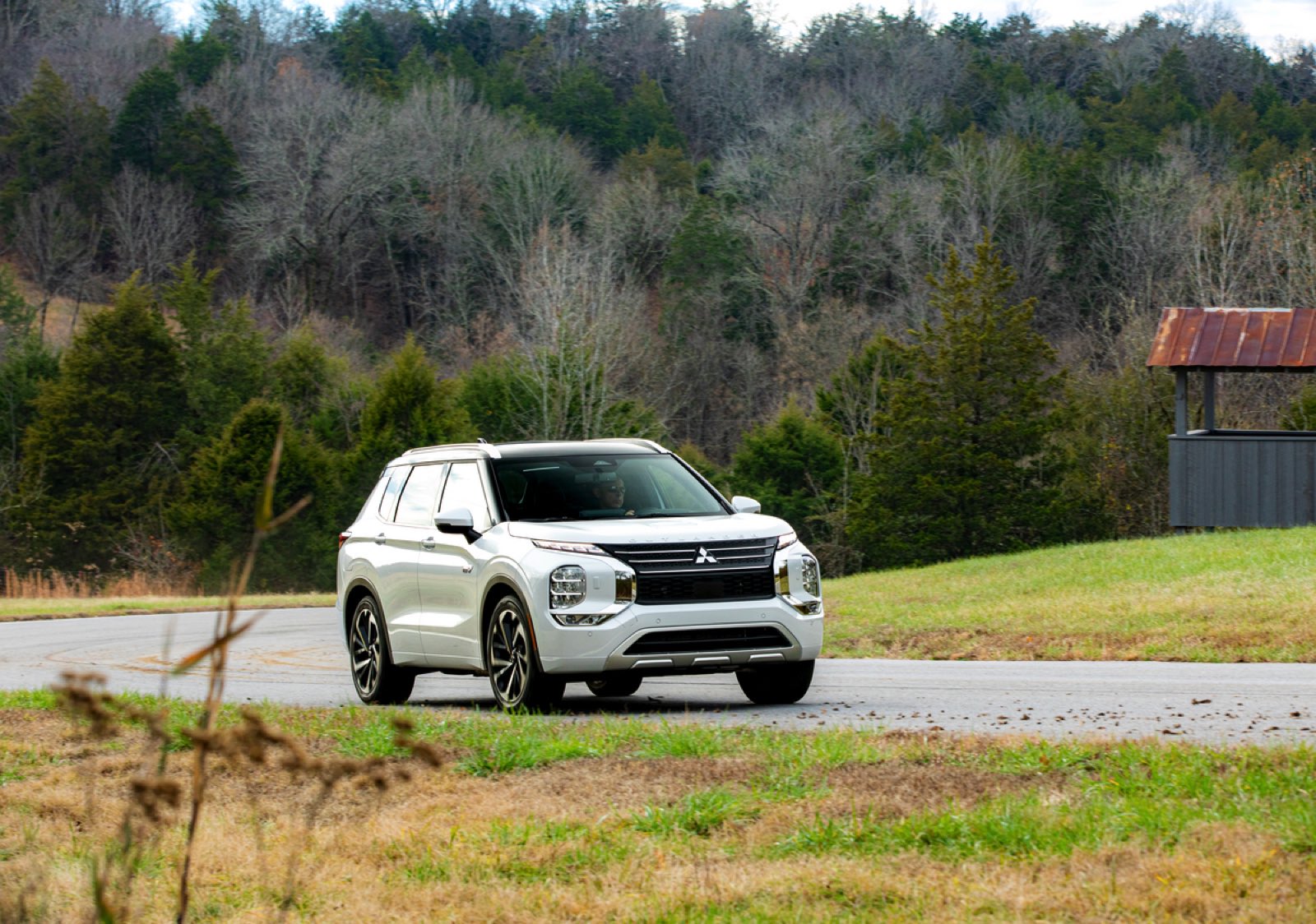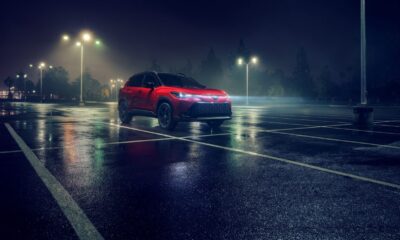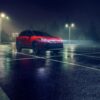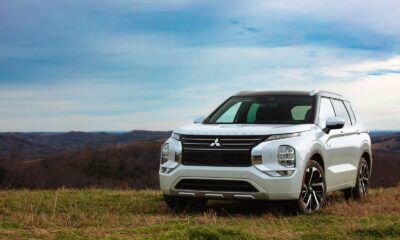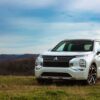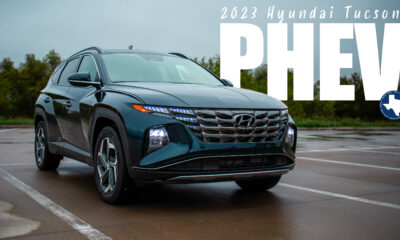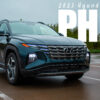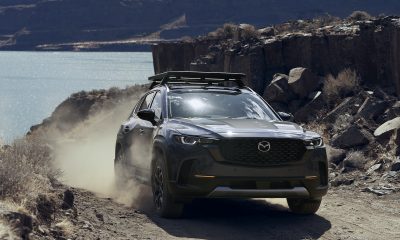Car Reviews
Mitsubishi Outlander PHEV: SHOCKINGLY GOOD
Mitsubishi Outlander PHEV:
SHOCKINGLY GOOD
It was just getting dark, but I had a deadline, and the office was still 90 miles away.
As is my nature, I relied on navigation systems – yes, plural…Google Maps, and Waze – to plot the shortest distance home. Both sent me scurrying from one Farm-to-Market Road to another in the wilds of East Texas. Both indicated acceptable ETAs, but I decided it might be wise to pick up the pace, at least until I landed on a familiar highway.
I asked the Mitsubishi Highlander PHEV, a roomy and heavy plug-in electric hybrid, to eclipse the posted speed limits by, well, a significant margin. To my utter surprise, the seven-seat SUV whipped down winding roads at nearly triple digits (closed course, semi-professional driver – ed.) with the aplomb and confidence of a European sports sedan.
“Arruhhhh?” is how Tim the Toolman might verbalize my thoughts.
That pretty much sums up my week with Mitsubishi’s flagship: a bunch of surprises, most pleasant. To be sure, Japan’s eighth-largest automaker sells high-dollar luxury and premium models on other continents, but the most an American can spend at a Mitsubishi dealership is on an Outlander. Gas-engine-only models start at $27,595. PHEVs come loaded with premium content and retail from $41,190 to nearly $50,000.
Solid bridge to electrics
A Reuters/IPIS poll this week indicated that American buyer interest in electric vehicles is beginning to accelerate. More than a third of Americans are interested in electrifying their ride. That might come as a surprise to those familiar with the bell curve of Diffusion of Innovation Theory, where that sort of acceptance is normally found in the third quintile of acceptance of new technology.
Yet, we’re still early in this paradigm shift away from carbon-based transportation. Battery factories and assembly plants are still under construction, models are still in R&D and charging networks are under development.
The price of entry is still high. The skim theory of marketing – sell first to the upper demographics – is in full swing. A few affordable EVs are available – notably the Chevrolet Bolt, Hyundai Kona and Kia Niro – but inventories are tight and rural dealerships are loathed to order them, perceiving a disinterest among red constituencies.
My conversations around town indicate a rising, bipartisan interest in electrics. Let’s skip speculation on why that shift is occurring and move to the one thing I keep hearing: nothing but pricey models are around. In this case, I tend to agree with dealers who stock few, if any.
Still, if you have realized that you are responsible for the contribution to global warming, or if you’ve tired of flinging $100 bills at countries that kill American soldiers and journalists, right now your options are limited.
One good option is a plug-in hybrid electric, such as the Mitsubishi Outlander PHEV. It has a 20-kWH battery that plugs into a regular 110 outlet and gives the vehicle around 38 miles of all-electric range, enough to cover most people’s daily drive. When you get home, do the same thing you do with your phone before you go to bed. Plug it in and you’ll both be ready for a full day.
When that battery is depleted, an Atkinson-cycle 2.4-L gas engine works with a hybrid battery to power the car. It’s all passive. You don’t have to throw any switches. The thing manages itself. On its own, the Outlander hybrid system managed around 25 mpg, about the same as the hybrid portion of a Chrysler Pacifica PHEV.
The Toyota Highlander Hybrid, in contrast, consistently delivers 35 mpg, making it a better choice for out-of-town adventurers. Using the Outlander’s daily plug-in power blended with a few jaunts up and down the interstate, however, we averaged better than 63 mpg.
We only encountered one hiccup in the charging system: Mitsubishi put the port on the right-rear quarter panel, meaning we had to back the car into the garage to reach an electrical outlet. Backing a car into a garage is not in Blonde Beauty’s job description.
Smooth power
Two pleasant surprises came in research on Outlander’s reliability and safety ratings. It’s above average in both, about on par with Nissan. Mitsubishi, after all, is part of the Nissan-Renault alliance, with Nissan holding the largest bloc of voting stock. The arrangement allows the companies to share expertise, manufacturing, and R&D costs.
The Outlander rides on the same skeleton as the Nissan Rogue, and much of the electronics and driver-assist safety gear will be familiar to Nissan drivers. Technical bits like the underbody, suspension pickup points, and cut lines for body panels are shared. They have identical 106.5-inch wheelbases.
Mitsubishi began selling the Outlander PHEV in 2013 and has sold more than 300,000 units in the intervening decade, making it the world’s all-time best-selling plug-in hybrid.
The Outlander PHEV has three motors, two in front and one in the rear. Upfront, one powers the wheels while the other acts as a generator to recapture energy on overrun or braking, using it to recharge the battery.
To provide all-wheel drive, a third electric motor powers the rear axle. The combined power of the engine and motors is 248 horsepower with a peak torque of 332 pound-feet, which smoothly propels the vehicle to 60 mph in 8 seconds and gives it a top speed of 105 mph, the company says.
The largest motor is in the rear, giving the Outlander the feel and control advantages of rear-wheel-drive. Mitsubishi’s S-AWC (Super-All-Wheel-Control) shuffles torque front-to-rear to assist in acceleration and braking, and vectors torque to the four corners to aid cornering.
The system also selectively applies braking to each of the corners, depending on input from yaw (front-to-back) and pitch (side-to-side) sensors. A gust of wind, for example, will within milliseconds elicit a counter response from the car, canceling the effect before drivers or passengers are aware there is an issue.
The real benefit of that system is what I felt on that dark highway. The car has superb stick through curves while insulating passengers from harshness in cornering and braking.
Luxury feel
The Outlander PHEV comes standard with a long list of features, including a panoramic sunroof, heated front seats, and a 12-speaker Rockford Fosgate sound system. It also comes with advanced safety features, such as adaptive cruise control and lane departure warning.
The Mitsubishi/Nissan driver-assist suite is one of the best-sorted in the industry. Called Safety Shield® 360 in Nissans, it provides automatic emergency braking with pedestrian protection, high beam assist, lane-keep assistance, blind-spot warning, rear cross-traffic alert and rear automatic braking.
The cabin is filled with high-end materials, including stitched leather seating, which is ample and comfortable. Our tester had heated front seats with massaging. Sitting in the driveway with the sound system cranked up with to full Eagles and enjoying the heated massage seats will get strange looks from the neighbors.
I know.
Lease, don’t buy
We took a serious look at obtaining one of these vehicles, but the numbers don’t work. It is about the same price and as fully loaded as our first choice, the Ford Escape PHEV. We put down a $1,000 deposit on an Escape in December and placed our order.
As February turned to March, we noted that the Louisville plant where Escape is built was shut down for quality control reasons. Not confidence-inspiring. Worse, Ford never communicated with us. No “Hey, here’s the deal.”
Crickets.
When Ford announced it would not fill all 2023 orders and that some customers would have to reorder 2024 models, we pulled the plug. Last year, after Congress authorized up to $7,500 in federal income tax credits for PHEVs, Ford promptly jacked up Escape prices by roughly $5,500,
At this point, it seems a safe bet that the Blue Oval will come back for the remaining $2,000 when it announces ’24 prices. I thought that money was intended for consumers, not corporations.
The Outlander would be eligible for the tax credit, but it is not built in America. Indeed, some of the electric components come from China. A loophole will allow a $7,500 credit on a lease, but leasing a car isn’t the way my bride rolls.
A $4,000 tax credit is available for used Outlanders, but a much larger battery pack makes a 2023 model better than a 2022, a complete redesign that is much better than a ’21. Used 2022 models are listing for less than $30,000.
All of this is subject to change. The Biden Administration this week signed a new trade agreement with Japan that it says will make Japanese vehicles eligible for tax credits. Congress does not appear to see it that way. Litigation is sure to follow.
If leasing works for you, however, the Outlander PHEV is a smart play. It comes with a 10-year, 100,000-mile warranty, a good reliability record, and top-notch safety ratings.
It’s a lovable lug, this one.
And it’s fun to drive.



